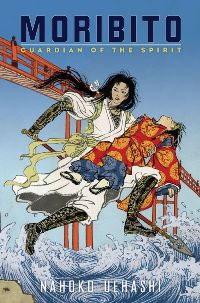Continuing from my last post, let’s do five more! Actually, what the heck, let’s do six!
Marco
Animorphs by K. A. Applegate

Marco is the reluctant, smart-aleck hero of the animorphs. He knows the world is at stake, but he feels it isn’t fair to his father for him to keep fighting. What if his father lost him, like how they lost Marco’s mom?
This choice, along with his sense of humour, sets Marco away from the other animorphs. It isn’t until the fifth book, after we get into his perspective, that he changes his mind. And it’s not just because he sees that fighting is the right thing. He’s given a reason to fight, in a huge twist, and it gets us rooting for him that much harder.
Ella
Ella Enchanted by Gail Carson Levine

Ella grows organically from the novel’s concept–the “blessing” of obedience to a child from a fairy. She’s fun to watch, and Levine makes wonderful use of internal dialogue to show Ella’s anxiety and wishfulness.
She is heavily involved in a romance plot, but girls are allowed to like boys. (Climb aboard the third wave!) The letters between herself and Charmont give her more time to show other interests as well. She cinches her designation as a hero at the climax of the novel, where like all good modern princesses, she saves herself.
Tatterhood
Tatterhood, collected by Christen Abjørson and Jørgen Moe

Pictured: Cosplay of Tatterhood by deviantart user Tatter-hood
A hundred and fifty years before Balsa and the Paper Bag Princess, there was Tatterhood. A princess wearing rags who uses a gigantic wooden spoon to lay the beatdown on hags and trolls.
She’s brave. She’s fearless. She doesn’t have to be beautiful! Well, actually, that changes near the end, but it happens under her own power. I’d still file this one under early feminist fairy tales.
Ronia
Ronia, The Robber’s Daughter by Astrid Lindgren

Although Pippi Longstocking is the more popular of Lindgren’s heroes, I find Pippi somewhat shallow. Ronia has more depth, and the choices she makes show more courage.
Basically, she goes against her father, the Robber King, to create peace with the other band of robbers. A classic example of embracing the other. And further, like many of the women on my list, she’s allowed to be wild and passionate and free.
Peter Pan
Peter and Wendy by J. M. Barrie

Peter Pan is magical. Not just the novel/play (although it is) but the character himself. The first mention of him is when Mrs. Darling is cleaning up the children’s minds to prepare them for bed. Talk about surreal! The same chapter has a dog acting as a nanny, tucking them in.
Then we go for a ride, chasing a shadow, flying through the air, fighting pirates, romancing mermaids. The whole time there’s this weird selfishness that makes Peter mesmerizing.
Although I love the character, Peter Pan (the novel/play) is one of the best examples of why we still need new children’s books today. It’s an amazing, enchanting story full of adventure. But it’s also full of toxic ideas–from the noble savages, to Tinkerbell’s hissyfit, to Wendy’s depiction as a nurturer who spends her free time knitting socks.
We need to write stories just as thoughtful, energetic, and seductive that carry more progressive ideas. And so, in a way, I see Peter leering down on children’s literature from a century back, acting as both one of its heroes and one of its villains.
Arnold Spirit Jr.
The Absolutely True Diary of a Part-Time Indian by Sherman Alexie

If I had made this post as a list, Arnold would be a contender for #1. He stands up to his entire community by leaving the reservation to go to a white school. As a result, he loses his best friend.
Like the Logan family, it’s unfair to expect Arnold to overcome systemic problems. It’s enough that he chooses a different path and fights the system on his own. Interestingly, similar to Roll of Thunder, Hear My Cry, the first heroic action is a reaction to an out-of-date textbook.
What makes Arnold memorable are the traits that make him unique. Not just his circumstance and disabilities, but his amazing sense of humour. He’s one of my favorite characters, full stop.
In making this list, it was very clear what my next post needed to be: diversity in children’s literature, particularly fantasy.















